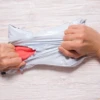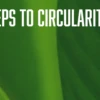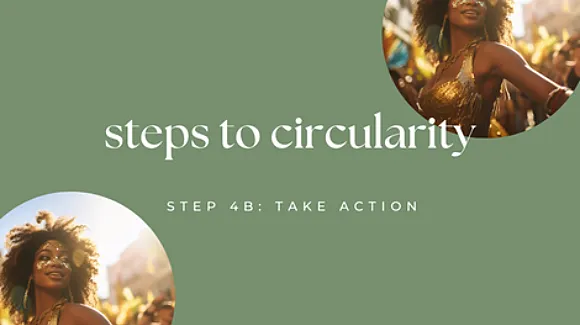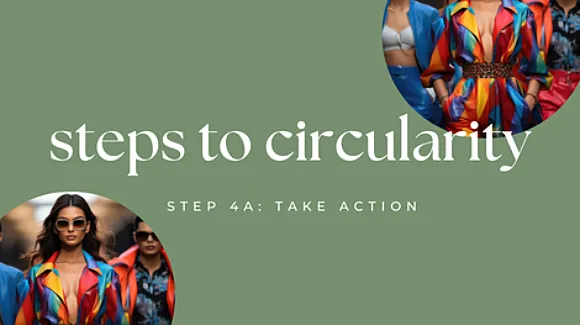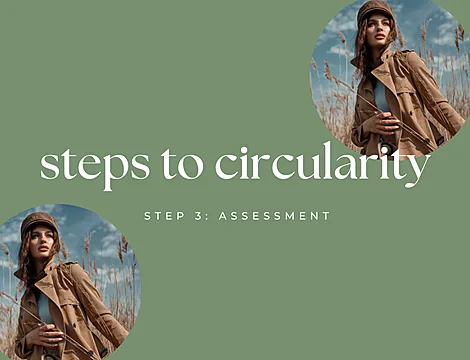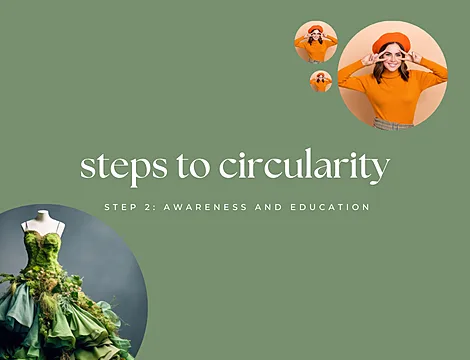In our blog post Steps to Circularity, we outlined five steps that a company can use as a guide to incorporate Circularity into their business.
We will follow up with a deeper dive into each of the steps with the hope that your company adopts them.
Part 4 - Take Action:
Have faith that the investment in the previous steps will ensure that you and your company will be prepared to do the work in shifting the business. To break it down further we have divided this step into three core areas.
- Design for Longevity
- Integrate Circular Business Modules
- Closed Loop Production
Closed-loop Production:
Closed-loop production is a new approach to looking at how products are designed and made.
The principle of Eliminating Waste and Pollution is usually quite daunting for anyone inside a brand because it is a blend of initiatives that are both directly and indirectly within one's control. When things are outside of the control of the brand, the ability to influence is harder.
That will guide how you approach this principle.
To start, the focus should be on how to reduce waste throughout the whole manufacturing process. As a brand, your decisions have impacts on your supply chain. For instance, the materials you select, and how those materials are made, colored, and treated. This is an area for development in knowledge and skills for your materials teams. Which materials, dyeing processes, chemicals, and treatments used cause waste? Waste can be a physical material, but also consider effluents, and residues. Focus conversations with your materials suppliers and ask, “How are the selections I am choosing creating waste?”
In addition to the materials is waste created in the cutting process. Industry averages 15% of the fabric is waste just in the cutting process. This is a great opportunity to adopt zero-waste pattern-making techniques.
It cannot be stressed enough; the priority must always be on reducing the need for a material or reducing waste and then reusing that material and/or its waste before any conversation about recycling is raised. Recycling cannot be seen as a swap with trash that enables the same overproduction behaviors.
Now that is said and clear, products should also be designed for recycling. Most recycling is an afterthought, where materials experts brought solutions to the market because there is a material considered waste that through a process can be reused again in its original form. Some great examples include aluminum cans, steel, paper, and some plastics (PET and HDPE).
Designing for recycling means having a knowledge of the properties of the material you are using and the applicability of that material to a recycling technology.
Recycling is important and brands should consider it in two ways. The first is that brands should be designing their products so that they can be recycled and delivered to recyclers. Secondly, brands must create the market for recycled materials by sourcing them.
Recycling can happen at various stages in the supply chain, including industrial waste being recycled at the factories (this is where the cutting scraps have an opportunity to be recycled) as well as the recycling of garments at the end of their life.
The data shows that less than 1% of materials are recycled from pre and post-consumer recycled materials.1 So a huge investment is needed if the apparel industry is going to rely on a robust recycling infrastructure. Companies need to invest in or collaborate with companies that are developing new recycling technologies, especially for blended fabrics which are currently difficult to recycle. While investing in one’s supply chain is still new for brands, the ability for a circular business does depend on an end case where the materials created can be recycled.

